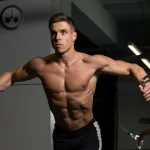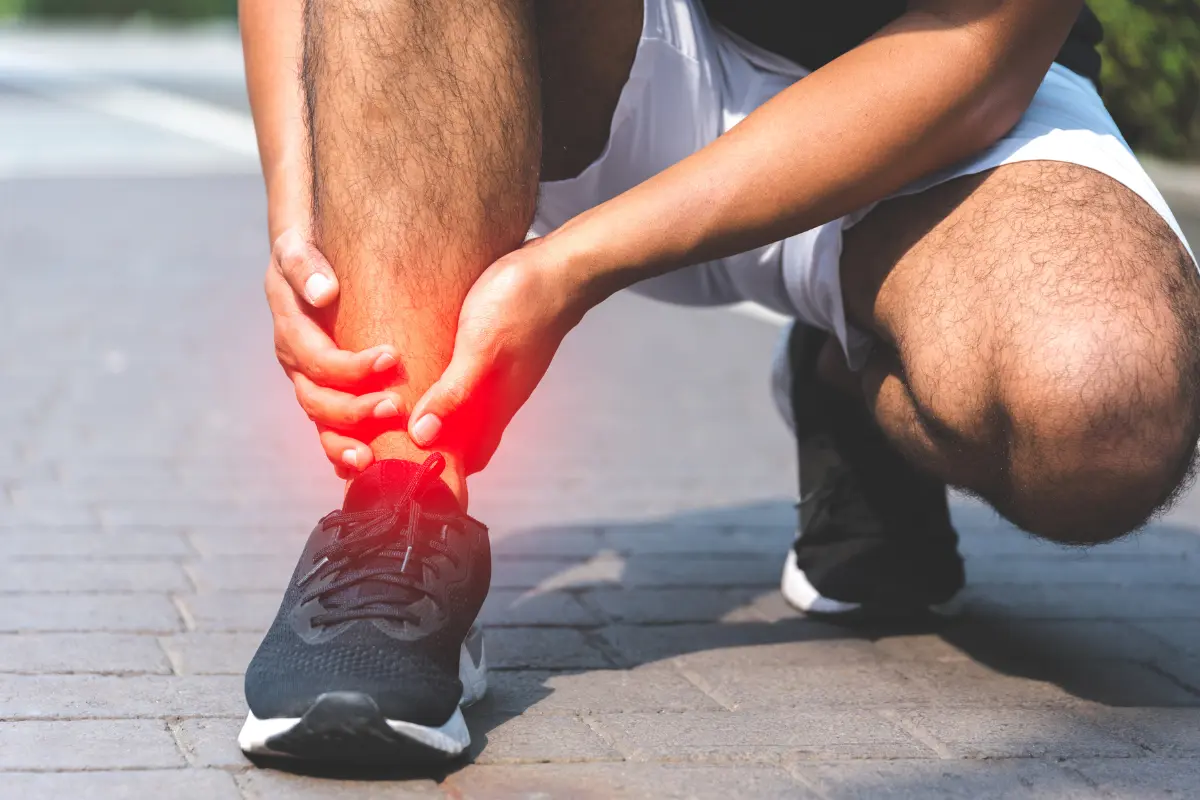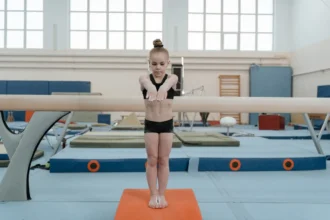Have you ever wondered why gymnasts have such impressive biceps? It’s not just genetics; there’s a lot more to it! In this article, we’ll reveal the secrets behind their powerful arms, including the special training and exercises they use.
The Anatomy of the Biceps
The biceps brachii is a unique muscle that crosses the elbow and shoulder joints. This anatomical feature allows the biceps to perform multiple functions:
- Flexing the Elbow: The most commonly known function, bringing the forearm closer to the upper arm.
- Supinating the Forearm: This action rotates the forearm, turning the palm upwards.
- Flexing the Shoulder Joint: A lesser-known function involving raising the arm forward.
The biceps perform these actions most effectively when the palm is facing forward. For instance, flexing the shoulder against resistance with the palm in this position engages the biceps even without bending the elbow.
Targeted Exercises
Gymnasts have big biceps mainly because of their unique and focused training routines that target their biceps in ways typical weightlifting doesn’t. Here’s how they do it:
1. Pull-Ups and Chin-Ups
Pull-ups and chin-ups are essential exercises in a gymnast’s training routine. These exercises are highly effective for bicep development because they involve lifting the entire body weight using the arms, especially engaging the biceps.
Pull-Ups:
This exercise involves gripping a bar with palms facing away (pronated grip), and pulling the body up until the chin is above the bar.
Pull-ups primarily target the upper back muscles but also heavily engage the biceps and forearms. Varying the grip width and positioning can shift the focus more onto the biceps, contributing to their development.
Chin-Ups:
In contrast, chin-ups are performed with an underhand grip (supinated grip), with palms facing towards the body.
This grip places more emphasis on the biceps compared to pull-ups. The closer grip used in chin-ups increases the range of motion for the biceps, leading to greater muscle activation and hypertrophy.
Gymnasts often perform variations of chin-ups, such as weighted chin-ups or explosive chin-ups, to further challenge their biceps and enhance muscle growth.
2. Straight Arm Bicep Training
Straight-arm exercises are a hallmark of gymnastic training, particularly in events like the rings.
Unlike traditional bicep curls, these exercises keep the arms extended, focusing on the biceps’ role in shoulder flexion and static holds. This method targets the biceps in a lengthened position, which is highly beneficial for muscle growth and overall strength.
In gymnastics, athletes often engage in straight-arm bicep training. Some key exercises include planche leans, Maltese leans, and back levers.
- The Planche: Holding the body parallel to the ground, supported by the arms. This exercise significantly engages the biceps, shoulders, and core, helping to develop overall upper body strength and stability.
- The Maltese: Similar to the planche but with the body lower and arms extended sideways. This move targets the biceps, chest, and shoulders, providing a unique challenge to the muscles by requiring them to maintain tension in a more extended position.
- The Back Lever: Holding the body horizontally face-down while hanging from the hands. This exercise is particularly effective for developing the lower part of the biceps, as well as strengthening the shoulders and core.
3. Ring Dips
Ring dips are a powerful exercise in the gymnast’s arsenal, primarily targeting the chest, triceps, and shoulders, but also engaging the biceps significantly due to the need for stabilization.
Performing dips on rings is considerably more challenging than on parallel bars or a fixed dip station because the instability of the rings requires greater control and muscle activation.
4. Rope Climbs
Rope climbs engage multiple muscle groups, primarily focusing on the biceps, forearms, shoulders, and upper back.
Pulling oneself up against gravity provides a powerful stimulus for muscle growth and strength. Gymnasts use various techniques and variations of rope climbs to maximize their benefits.
Grip Strength
Grip strength is important for a gymnast’s bicep development, especially during ring exercises. Gymnasts need a strong grip to perform moves like the iron cross and muscle-ups. These exercises continuously work the forearms and biceps, building muscle endurance and size.
Specific Grips and Their Benefits
- Neutral Grip: This grip is used mainly for pulling movements and ensures that pressure is placed on the upper portion of the palms. It helps in building the biceps and forearms effectively by ensuring proper engagement during pull-ups and similar exercises.
- False Grip: The false grip is crucial for doing muscle-ups and other advanced moves. It involves placing the rings deeper into the palms and wrapping the thumb around the knuckles. This grip shortens the lever arm, reducing the range of motion and making it easier to hold positions like the iron cross or maltese. These positions work the forearms and biceps a lot.
Continuous Engagement of Biceps and Forearms
Gymnasts often do ring exercises like pull-ups, chin-ups, and holding positions like the iron cross, which need a strong grip. These moves work the forearms and put a lot of strain on the biceps.
This constant use is key for muscle growth, making the biceps bigger over time. Supporting and controlling their body weight during these exercises requires both strength and endurance, which makes their biceps even stronger and bigger.
Specificity of Training
The training routines of gymnasts are designed to maximize muscle engagement. For example, rope climbs are highly effective for both grip strength and bicep development.
These activities require the gymnast to maintain a tight grip while performing dynamic movements, which intensively works the biceps and forearms.
Such exercises are integral parts of a gymnast’s training regimen and are repeated frequently, contributing to the impressive arm development observed in these athletes.
Training Techniques and Exercises
Gymnasts perform various exercises that enhance grip strength, such as:
- Bar Hangs and Dead Hangs: These exercises build endurance and strength in the hands and forearms by having gymnasts hang from a bar for extended periods.
- Ring Workouts: Performing dips, L-sits, and muscle-ups on rings not only improves grip strength but also targets the biceps and shoulders.
- Wrist Curls and Reverse Wrist Curls: These are supplementary exercises that specifically strengthen the muscles involved in gripping, enhancing overall upper body strength.
Volume and Intensity
Gymnasts undergo rigorous training regimens characterized by high volume and intensity. This combination of volume and intensity ensures that gymnasts’ muscles are consistently challenged and adapted to the demands of their sport.
High Volume Training
High volume training refers to performing a large number of repetitions and sets within a workout.
For gymnasts, this often involves multiple training sessions per day, focusing on various skills and muscle groups. Key aspects include:
- Repetitive Skills Practice: Gymnasts perform numerous repetitions of routines and exercises to perfect their techniques. This repetitive practice enhances muscle endurance and hypertrophy.
- Comprehensive Workouts: Training sessions are designed to cover all muscle groups, ensuring balanced development. For example, a gymnast might work on rings, bars, floor exercises, and strength conditioning all within a single day.
High Intensity Training
High intensity training involves exercises performed at or near maximal effort. This type of training is essential for building muscle strength and power. For gymnasts, high intensity workouts include:
- Explosive Movements: Activities such as vaults, tumbles, and high-flying dismounts require maximum power and speed. These exercises recruit fast-twitch muscle fibers, promoting muscle growth and strength.
- Strength Conditioning: Gymnasts engage in exercises like weighted pull-ups, dips, and plyometric drills that push their muscles to their limits, enhancing both muscle size and performance capabilities.
Impact on Muscle Development
The combination of high volume and high intensity training has a significant impact on muscle development for gymnasts. The continuous stress placed on the muscles, particularly the biceps during ring and bar exercises, leads to:
- Muscle Hypertrophy: The consistent load and varied exercises promote muscle growth by increasing muscle fiber size and strength.
- Endurance and Strength: High volume builds muscle endurance, while high intensity enhances muscle strength and power, resulting in well-rounded muscular development.
In conclusion, the impressive biceps of gymnasts are the result of targeted and rigorous training routines that go beyond typical weightlifting. Their workouts ensure continuous muscle engagement and growth, resulting in powerful and well-defined biceps.






